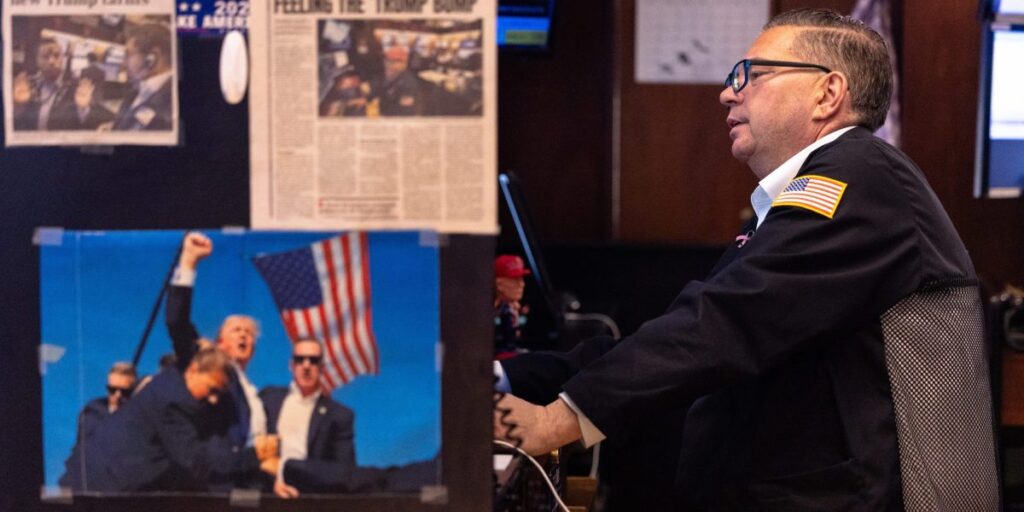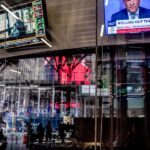
- President Donald Trump regularly boasted about the stock market’s performance during his first term in office, but he’s recently brushed off concerns about his on-again, off-again tariff threats rattling investors. Still, BofA credit strategists say recent developments signal the administration and the Federal Reserve are both primed to react if equity prices plummet.
The stock market sell-off earlier this month appeared to disabuse investors of the notion President Donald Trump would intervene to support equity prices if his policies spooked markets. However, Bank of American strategists say the so-called “Trump put,” a play on options terminology, remains alive and well following reports the administration has significantly narrowed a batch of tariffs set to be announced Apr. 2, which the president has referred to as “Liberation Day.”
Trump regularly bragged about the market’s performance during his first term in office. Stocks initially soared after his election victory amid enthusiasm his administration would focus on business-friendly priorities like renewed tax cuts and deregulation, rather than aspects of his agenda deemed less appealing to investors. However, Treasury Secretary Scott Bessent rejected that notion as the president’s on-again, off-again tariff threats rattled markets, with Trump himself refusing to rule out a recession.
“There’s no put,” Bessent told CNBC earlier this month. “The Trump call on the upside is, if we have good policies, then the markets will go up.”
Purchasing a “put” option contract gives an investor the right to sell an underlying security at a predetermined price, known as the strike price, and, therefore, can be used as an instrument to hedge against downside risk. Meanwhile, simply buying a call option, or the right to purchase the asset at the strike price, is a bullish bet on the security’s value increasing.
To be clear, the idea of a “Trump put” refers to a general commitment from the president to step in if share prices fall dramatically, not any mechanical trading action.
The White House didn’t immediately respond to Fortune‘s request for comment.
The origins of the ‘Fed put’
Over two decades ago, market watchers and journalists coined a similar phrase referring to the Federal Reserve and Alan Greenspan, who served as chair of the central bank from 1987 to 2006. At the beginning of his tenure, the Fed cut rates shortly after the “Black Monday” crash in October 1987, which provoked fears of a credit crunch. The notion of a so-called “Greenspan put” grew after arguably similar episodes in 1998 and January 2001.
Bank of America credit strategists Yuri Seliger and Jean-Tiago Hamm believe America’s central bank remains primed to step in if stocks plummet. While the Fed held rates steady at its March meeting, the statement from the Federal Open Market Committee said it was closely monitoring “uncertainty around the economic outlook,” with policymakers still penciling in two interest rate reductions in 2025.
“The recent market selloff potentially brought us closer to the strike prices for both the Fed and Trump puts,” Seliger and Hamm wrote in a note Monday.
The note claimed the committee’s relatively dovish commentary shows the central bank is particularly attuned to concerns about slowing growth, despite inflation remaining above the Fed’s 2% target.
Meanwhile, Seliger and Hamm said recent developments in U.S. trade policy underline the Trump put is also real. After a relatively quiet week for tariff announcements, reports from The Wall Street Journal and Bloomberg over the weekend claimed the administration was considering narrowing the scope of the so-called “reciprocal tariffs” being unveiled Apr. 2, which the president initially ordered economic officials to design specific to virtually every U.S. trading partner.
Markets got a boost off the news early this week, but the S&P 500 fell over 1% Wednesday ahead of Trump’s announcement of a 25% tariff on imported vehicles and auto parts.
This story was originally featured on Fortune.com







